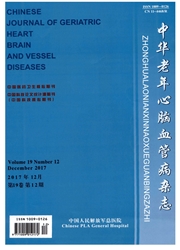

 中文摘要:
中文摘要:
目的了解广西黑衣壮族中老年人群的血脂水平及其危险因素。方法采用整群抽样调查方法对657例黑衣壮族中老年人群的血压、身高、体重、体重指数(BMI)、血脂及载脂蛋白(apo)进行测定,并将其结果与520例当地的汉族人群作比较。结果黑衣壮族人群的总胆固醇、甘油三酯、低密度脂蛋白胆固醇和apoB水平明显低于汉族人群(P〈0.05),但高密度脂蛋白胆固醇水平和apoA1/apoB则显著高于汉族人群(P〈0.01);两民族的apoA1水平比较差异无显著性意义。黑衣壮族人群血脂异常患病率也明显低于汉族人群(P〈0.05)。黑衣壮族人群血脂异常患病率与BMI和血压呈显著正相关,而汉族人群血脂异常患病率则与年龄、BMI和血压呈显著正相关,与性别呈显著负相关(女性高于男性)。结论黑衣壮族和汉族中老年人群的血脂谱、血脂异常患病率及其危险因素存在明显差异,可能与他们的饮食习惯、生活方式、体力活动和遗传因素不同有关。
 英文摘要:
英文摘要:
Objective To determine the lipid level and its risk factors in the middle-aged and elderly people of Guangxi Hei Yi Zhuang population. Methods A total of 657 people of Hei Yi Zhuang nationality aged 40 and over were surveyed by cluster sampling. Blood pressure, height, weight, serum lipid and apolipoprotein (apo) levels were measured, and both body surface areas and body mass index (BMI) were calculated. The results were compared with those in 520 people of Han nationality who also live in that district. Results The levels of total cholesterol, triglyceride, low-density lipoprotein cholesterol, and apo B in Hei Yi Zhuang nationality were significantly lower than those in Han nationality ( P 〈 0.05), respectively; but the levels of high-density lipoprotein cholesterol and the ratio of apo A1 to apo B in Hei Yi Zhuang nationality were significantly higher than those in Han nationality ( P 〈0.01). There were no significant differences in apo A1 levels. The prevalence of dyslipidemia in Hei Yi Zhuang population was also significantly lower than that in Han nationality ( P 〈 0.05). The prevalence of dyslipidemia was positively correlated with BMI and blood pressure in Hei Yi Zhuang nationality, whereas it was positively correlated with age, BMI and blood pressure, and negatively correlated with sex (female higher than male) in Han population. Conclusion The present study reveals significant differences in the lipid profiles, the prevalence of dyshpidemia and its risk factors between Hei Yi Zhuang and Han middle-aged and elderly population, which might result from different dietary habit, life style, physical activity, as well as genetic factors.
 同期刊论文项目
同期刊论文项目
 同项目期刊论文
同项目期刊论文
 期刊信息
期刊信息
